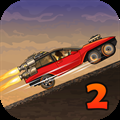Dungeons & Dragons: 6 Tips For Running Planescape's Turn Of Fortune's Wheel Adventure

Quick Links
- Things To Mention In Session Zero
- Have Fun With The Respawn Mechanic
- Set An Entire Prep Session Aside Before The Finale
- Use The Natures Of The Gate-Towns To Guide Your Players' Decisions
- Don't Forget About Reenee
- Use The Bastion Unearthed Arcana To Customise The Walking Castle
Turn Of Wheel's Fortune takes a very different approach to most other Dungeons & Dragons modules published under the game's Fifth Edition. Killing off the player characters is not just encouraged but forms a core mechanic of the module. Some sections of the adventure occur outside linear time and the book doesn't always make it easy to follow.
RelatedDungeons & Dungeons: Planescape: Adventures In The Multiverse – The Outlands, Explained
From everyday life to cosmic realignment and everything else in the multiverse, we explain the Outlands in Dungeons & Dragons.
PostsThese peculiarities make it a challenge for both Dungeon Masters and players. If you learn the right way to lean into the module's eccentricities while also keeping it from derailing, it can be a fun and memorable adventure that other modules can't quite recapture in the same way.
Things To Mention In Session Zero
Setting Up Camp by Matthew StawickiCharacter creation in Turn Of Fortune's Wheel works rather differently than most other modules, lacking the traditional entry points that allow a DM to stitch together unrelated campaign books. An adventurer who has defeated Strahd can take a victory lap by entering the Dungeon of the Mad Mage, with a GM letting them skip past the less challenging early levels.
A character cannot enter Turn of Fortune's Wheel from another campaign due to the narrative structure around the party members: The player characters are amnesiacs who die early and often, being replaced by alternative universe versions of themselves each time.
A player who starts the game already attached to their character will have a sad time when they get locked in the crematorium in chapter one and die instantly. Bringing in that character's evil twin with the pencilled-on moustache is a gut punch if you are emotionally invested.
The book even encourages you to find chances to kill your players quickly, so they can learn the lesson that death isn't permanent in the module. If they survive the entire campaign as a single incarnation, it will be revealed that Shemeshka has already killed the original version of them.
Players who already know the twists that occur later might work to plan character arcs around them, creating character flaws that show how Shemeska defeated their original incarnation.
Have Fun With The Respawn Mechanic
Art by John StankoModern Dungeons & Dragons takes a much more narrative approach to player characters than its wargaming roots. As a result, character death is a lot rarer and this module allows you to explore the spaces outside those boundaries. Killing a party member for a single joke or misplay is generally a bad idea but should be embraced in this module.
Other systems have their own approaches this situation. It isn't punitive for a game of Paranoia to splatter its party members across the walls because they have a ready supply of clones.
Killing off characters can be a tool for the players to navigate certain puzzle encounters. If one of your players wants to build a staircase out of their accumulated corpses instead of finding a ladder, you should let them try.
The module recommends that people create a total of three incarnations for a single character but depending on your group you can expand this number or change the terms of how incarnations work:
Group Playstyle
Approach to Incarnations
Notes
Lighthearted Roleplay
Three to five incarnations with similar character sheets but wildly different personalities.
This saves time spent having to create duplicate character sheets if your group is more focused on the roleplay side of the incarnation system.
Serious Roleplay
Three incarnations each with wildly different playstyles but similar personalities.
This adds a different type of impact to the incarnation system. New incarnations will play the same and have a shared backstory but take different approaches to the non-roleplay aspects of the game.
Gameplay Focused Group
Three incarnations, but they don't spawn with full HP and spell slots.
If your group find it easier to jump off a cliff than take a short rest, you should consider adjusting how many resources new incarnations spawn with. Don't be punitive, but ensure combat stays balanced.
Everyone in the group has a year's collection of weird gimmick builds they want to try
As many incarnations as the players are willing to create. Dead incarnations don't return.
You can choose to lean into the incarnation system and let people play functionally new characters with a shared memory from their past incarnation.
Set An Entire Prep Session Aside Before The Finale
Faction Agents by Taras SusakIt's been a long time since a module went up to level 17. Turn of Fortune's Wheel makes this transition a bigger jolt by having players jump from level 10 to 17 at the end of chapter 14. A lot of tables aren't experienced at high-level play and will struggle both building their character and piloting them.
Here are some of the key decisions that players might spend a long time considering.
Decisions
Problems
Solutions
New Spells Learned
Many players aren't familiar with the spells available at high levels, so will need to read through many options at once.
Note down some consistently good spells at each level a player can take if they're stuck deciding.
Free Legendary Item
There are a lot of legendary items to choose from and most require GM permission.
Have a recommendation for each player. No fighter will turn down a Vorpal Sword, nor a Paladin refuse a Holy Avenger.
New Class Features
Jumping straight back into the plot-relevant combat means many players won't have time to learn their new class features.
Run a simple random encounter after levelling up that walks them through their newfound powers.
Remain A Glitch
A player can choose to forgo the other rewards and remain as a glitch. This means they'll be seven levels below the party but functionally immortal.
Dungeons & Dragons isn't designed to have player characters with a seven-level difference between them. If a player chooses this, let them respawn faster than normal, so they don't feel left out.
At this point, the Glitch has ended for any character who has freed their incarnations, so if you have any more comedic deaths in mind you should get them out of the way during part two or pile them onto any party members who choose to remain glitches.
Use The Natures Of The Gate-Towns To Guide Your Players' Decisions
A large portion of the adventure is functionally open world: The players can visit the seven Gate-Towns in any order. This portion of the adventure is spread across a wide level range, meaning that some of the encounters will be trivialised if done in a certain order.
Beltha's gang in Automata will pose no threat to a level eight party: A CR six and five with two CR one drones are flattened by a level eight party. It doesn't matter if "the red slaad, Kythkyr tries to prevent intruders from climbing to the balcony" when many characters can fly after reaching level seven. Since Automata is lawfully aligned, smart players will investigate here first to learn more about the modrons.
Other town chapters are entirely focused towards exploration and social encounters. Unless the party make some rather unusual choices, their expedition to Sylvania will be entirely roleplay-focused. This makes it a good early choice and the reputation of Sylvania as a site of festivity and merriment can guide the players towards visiting.
If your players are itching for combat after a chapter which doesn't feature any fighting, slot in some random encounters during transit. You'll have an easier time adjusting the difficulty of a new encounter than by modifying a prebuilt one composed of named characters.
Conversely, if the party has too much combat, use one of the social events from Chapter 12. These can be handled in any order so are good for adjusting the tone and pace of a session.
Don't Forget About Reenee
Chronepsis by John TedrickIf you're reading through the adventure as you go, it is incredibly easy to miss the events listed in chapter 12, which are meant to occur spread out over the previous several chapters. Your campaign will survive missing the Celestials vs. Fiends baseball episode, but the plot surrounding the dragon Renesnuprah carries more weight and deserves better pacing.
It is entirely possible to have the entirety of Reenee's arc take place in a single session after clearing all six Gate-Towns, but the time-bending puzzle of "take this item, your future self will need it" is a lot less mysterious when your future self is five minutes away.
Use The Bastion Unearthed Arcana To Customise The Walking Castle
Via Wizards Of The CoastThe Walking Castle Iedcaru is intended to be used as a base for the players as they travel around the Outlands.
While it is technically on loan from the Githzerai sage Zaythir during the adventure, you may choose to let players make a home out of it. The setup of the module works well with the Bastion rules.
Bastion Rule
Adaptations For The Module
DM notes
Bastion turns
Give two bastion turns each time the party travels between gate towns.
Give an extra bastion turn for sidequests.
Give one turn in maintenance mode when the party breaks linear time.
The goal is a total of six to eight turns per level, so you can adjust these numbers if your group travels often.
Character Death
Instead of a bastion falling on character death, they respawn as normal for the module.
If the entire party dies, have some time pass and resolve a turn in maintenance mode.
The normal rules for bastions falling or spending BP to resurrect don't work for this module.
Hirelings
Faction NPCs the players are friendly with can be offered as hirelings.
Specialist hirelings might be available only from certain Gate Towns.
NPCs the players grow fond of make good recurring characters in any campaign.
Existing Castle Facilities
The Castle already contains a library and garden, among other usable spaces.
This makes up for players getting their bastion a level later than intended.
Zaythir may need some convincing if the players want to do anything excessive in remodelling her home.
NextDungeons & Dragons: Complete Guide To Planescape – Adventures In The Multiverse
Whether using these books for your own campaign or playing the adventure within, here's everything a DM needs to know about Planescape.
Posts












